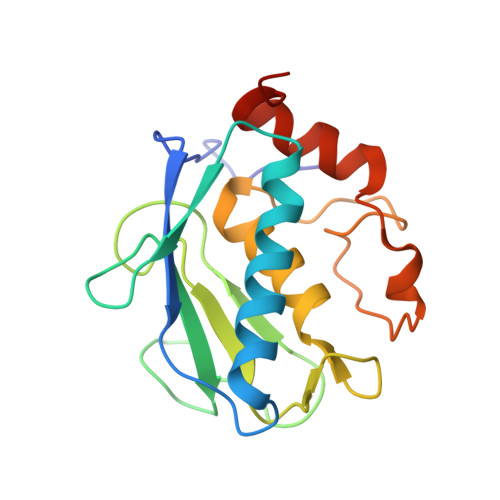Design and synthesis of piperazine-based matrix metalloproteinase inhibitors.
Cheng, M., De, B., Pikul, S., Almstead, N.G., Natchus, M.G., Anastasio, M.V., McPhail, S.J., Snider, C.E., Taiwo, Y.O., Chen, L., Dunaway, C.M., Gu, F., Dowty, M.E., Mieling, G.E., Janusz, M.J., Wang-Weigand, S.(2000) J Med Chem 43: 369-380
- PubMed: 10669564
- DOI: https://doi.org/10.1021/jm990366q
- Primary Citation of Related Structures:
1D8F - PubMed Abstract:
A new generation of cyclic matrix metalloproteinase (MMP) inhibitors derived from dl-piperazinecarboxylic acid has been described. The design involves: incorporation of hydroxamic acid as the bidentate chelating agent for catalytic Zn(2+), placement of a sulfonamide group at the 1N-position of the piperazine ring to fill the S1' pocket of the enzyme, and finally attachment of diverse functional groups at the 4N-position to optimize potency and peroral absorption. A unique combination of all three elements produced inhibitor 20 with high affinity for MMPs 1, 3, 9, and 13 (24, 18, 1.9, and 1.3 nM, respectively). X-ray crystallography data obtained for MMP-3 cocrystallized with 20 gave detailed information on key binding interactions defining an overall scaffold geometry for piperazine-based MMP inhibitors.
Organizational Affiliation:
Procter and Gamble Pharmaceuticals, Health Care Research Center, 8700 Mason-Montgomery Road, Mason, Ohio 45040, USA.

















